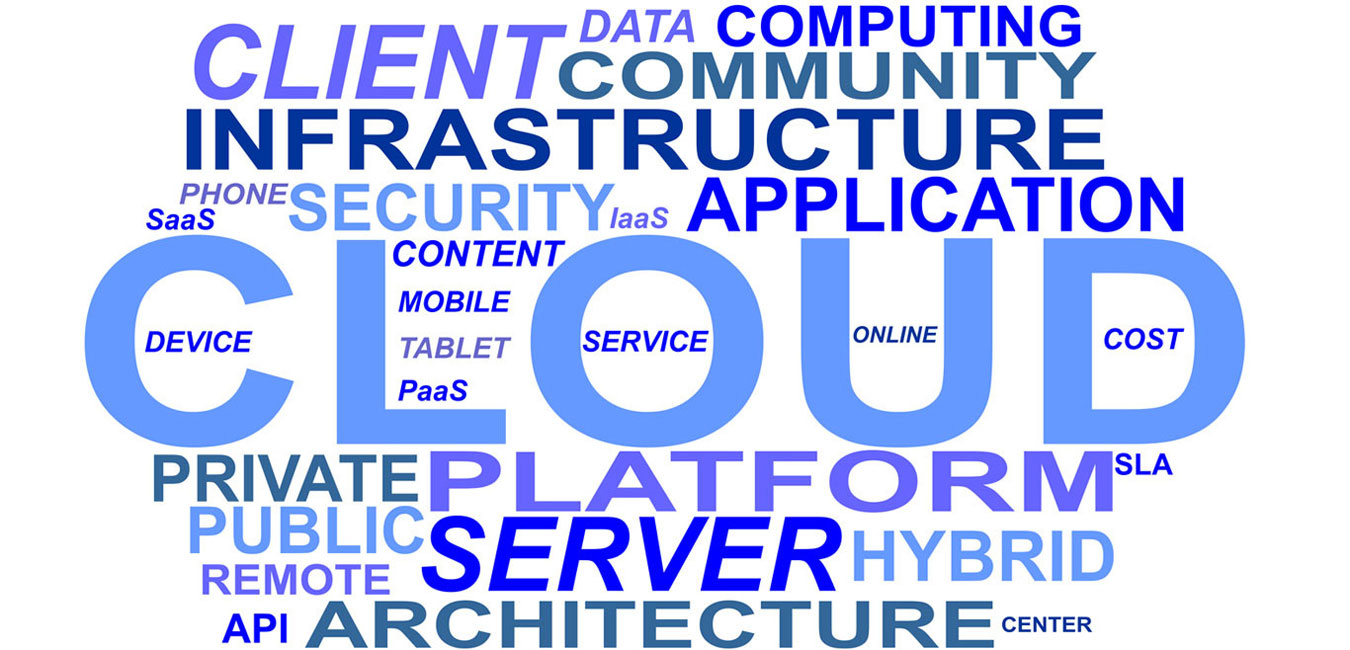What is Multi-Cloud? Key Challenges, Solutions, and Best Practices for Seamless Integration
When running a business you want the best of everything – the fastest servers, the most secure storage, and the most cost-effective solutions. That’s where multi-cloud comes in. Multi-cloud is widely being adopted by entities who wish to stay agile, competitive, and ahead of the curve.
Sify Technologies recognized in 2020 Gartner Market Guide for Public Cloud Managed and Professional Services Providers, Asia/Pacific
Chennai, 09 June 2021— Sify Technologies Limited (NASDAQ: SIFY), India’s most comprehensive ICT solutions provider with global service capabilities spanning Data Centers, Networks, Cloud, Infrastructure Managed services and Applications management, today announced that the company has been recognized in Gartner’s Market Guide for Public Cloud Managed and Professional Services (MSPs) Providers in Asia/Pacific.
“The markets across the Asia Pacific region differ significantly in their IT maturity and readiness for cloud adoption. With an increasing number of Enterprises adopting Public Cloud services for business agility, this recognition is a testimonial to our industry-leading cloud capabilities”, said Kamal Nath, CEO, Sify Technologies.
Delighted at the recognition, Ravi Maguluri, Chief Technology Officer, Cloud and Digital Services, said “Sify with its cloud@core philosophy and integrated data center, multi-cloud and network solutions is a first-choice partner for Enterprises looking to meet their cloud transformation goals. We are building competencies in automation, low-code frameworks and consumable AI/ML to help our customers realize their digital objectives. We are excited to be active contributors in APAC’s evolution into a strong digital hub”.
“A growing number of public cloud managed service providers are based or operating in the Asia/Pacific, differing significantly in competency, background and business focus. This research helps sourcing, procurement and vendor management leaders identify providers best suited to their needs.” (Gartner Research*)
*Source : Gartner, Market Guide for Public Cloud Managed and Professional Services Providers, Asia/Pacific, DD Mishra et al., 19 October 2020
Gartner does not endorse any vendor, product or service depicted in its research publications, and does not advise technology users to select only those vendors with the highest ratings or other designation. Gartner research publications consist of the opinions of Gartner’s research organization and should not be construed as statements of fact. Gartner disclaims all warranties, expressed or implied, with respect to this research, including any warranties of merchantability or fitness for a particular purpose.
About Sify Technologies
A Fortune India 500 company, Sify Technologies is India’s most comprehensive ICT service & solution provider. With Cloud at the core of our solutions portfolio, Sify is focused on the changing ICT requirements of the emerging Digital economy and the resultant demands from large, mid and small-sized businesses.
Sify’s infrastructure comprising state-of-the-art Data Centers, the largest MPLS network, partnership with global technology majors and deep expertise in business transformation solutions modelled on the cloud, make it the first choice of start-ups, SMEs and even large Enterprises on the verge of a revamp.
More than 10000 businesses across multiple verticals have taken advantage of our unassailable trinity of Data Centers, Networks and Security services and conduct their business seamlessly from more than 1600 cities in India. Internationally, Sify has presence across North America, the United Kingdom and Singapore.
Sify, www.sify.com, Sify Technologies and www.sifytechnologies.com are registered trademarks of Sify Technologies Limited.
Forward Looking Statements
This press release contains forward-looking statements within the meaning of Section 27A of the Securities Act of 1933, as amended, and Section 21E of the Securities Exchange Act of 1934, as amended. The forward-looking statements contained herein are subject to risks and uncertainties that could cause actual results to differ materially from those reflected in the forward-looking statements. Sify undertakes no duty to update any forward-looking statements.
For a discussion of the risks associated with Sify’s business, please see the discussion under the caption “Risk Factors” in the company’s Annual Report on Form 20-F for the year ended March 31, 2020, which has been filed with the United States Securities and Exchange Commission and is available by accessing the database maintained by the SEC at www.sec.gov, and Sify’s other reports filed with the SEC.
For further information, please contact:
Sify Technologies Limited
Mr. Praveen Krishna
Investor Relations & Public Relations
+91 9840926523
How to orchestrate workloads between public and private clouds
Imagine how an orchestra combines a multitude of instruments to create a symphony. In the same way, a hybrid cloud orchestrates, skillfully combining public and private cloud, to create a seamless cloud infrastructure. As multiple applications on a public–private hybrid infrastructure could add to complexities, with the help of orchestration, a centralized structure can be created to allow management of multiple applications using a single interface. Differences in bandwidths, workloads, and access controls can all be managed by this orchestration software.
Integration of different technologies in a hybrid infrastructure determines how effective the orchestration is. For seamless integration, the compatibility between different systems and applications must be ensured, so that orchestration of workloads between public and private clouds is seamless, providing the needed high-performance compute. In the absence of orchestration, enterprises using a hybrid cloud would be forced to manage the public and private clouds in silos, which can put pressure on their resources and demand additional overheads. In addition, orchestration provides the benefit of streamlining resources for coordination, making it easier to manage multiple workloads.
Orchestration on the Private Cloud
A private cloud may not be cheap, but it brings its advantages. It gives greater control over assets and provides enhanced cloud security, resiliency, and flexibility to the system. With private cloud orchestration, automation of the infrastructure could be managed, by establishing workflows that work without human intervention. While private cloud automation would initiate processes automatically, orchestration results in a unified structure of workflows. In this arrangement, resources can be provisioned as needed to optimize the workloads on a private cloud. Thus, an organization can realize savings in engineering time, and IT costs.
What does orchestration involve?
Orchestration enables a coordinated deployment of automation services on the cloud. Cloud orchestration happens at three levels: resource, workload, and service. At the resource level, IT resources are allocated, and at workload level, they are shared. At the service level, services are deployed so that shared resources are optimally utilized. While individual automation only takes care of a single task, orchestration automates end-to-end processes. It is similar to creating a process flow that automates the sequence of automation. The workflows created in the process enable technologies to manage themselves. There are many orchestration tools available in the market that can be used by organizations based on their individual requirements. Some popular tools are Chef, Puppet, Heat, Juju and Docker. Chef is used at OS level while Puppet is more popular at middleware level. Heat is an orchestration method developed from OpenStack, and it can orchestrate everything in OpenStack. Juju is used at the service level while Docker serves both as a tool for orchestration and technology for virtualization.
Workload placement considerations
In a hybrid cloud, both public and private applications generate different workloads. To manage these workloads, and handle their seamless switch between public and private cloud infrastructure, an appropriate cloud strategy is needed. Distributing the workload between different IT assets is a business decision in which regulatory compliance requirements, trade-offs, business risks, cost, and growth priorities are taken into consideration. For instance, certain countries like China may have certain federal restrictions on the use of the internet for which a private WAN can be deployed. The cost could be a concern for an organization looking to provide last-mile connectivity if private cloud is deployed, but with public infrastructure used for addressing service needs of remote locations, cost savings can be realized. A private or hybrid cloud may require establishing an in-house team for IT support while public cloud can work without any, and with limited, cloud expertise in-house.
Technical parameters such as data volume, performance, security, and integration are considered when orchestrating workloads between different cloud deployments. Based on the level of importance each of these attributes carries, workloads can be shifted between the public and private cloud. Public clouds could be deployed for workloads that require a higher level of security but a lower level of integration and performance, such as CRM and information systems. When a continuous demand for a higher level of integration arises, an organization may have to add a private cloud to the IT infrastructure. Workloads like file printing, networking, and systems management may work with either nature of the cloud. However, if data volumes grow, the public cloud would not suffice, and the organization should orchestrate to a private cloud. Applications like enterprise resource planning, data marts, and Big Data analytics make use of high volumes of data that need a private cloud to manage.
A true hybrid cloud allows for easy migration of workloads between public and private clouds. It is always wise to develop a hybrid cloud strategy depending upon workloads, as portability of workloads becomes possible and traditional applications can be bridged with modern applications across the cloud infrastructure. When cloud deployments are planned based on the changing needs of the workloads using orchestration, the enterprise can make their IT infrastructure more optimized, flexible, and adaptive.
Sify’s many enterprise-class cloud services deliver massive scale and geographic reach with minimum investment. We help design the right solution to fit your needs and budget, with ready-to-use compute, storage and network resources to host your applications on a public, private or hybrid multi-tenant cloud infrastructure.
5 things to consider when weighing public cloud against private cloud
Businesses pursuing the cloud are faced with the existential question – public or private cloud? Each has its merits that should be considered as per one’s business goals. Here are five factors you must consider prior to choosing a cloud platform.
Accessibility and usage
Each corporation has requirements unique to its business. For example, you have to consider if you can use SaaS the way it was designed or whether you need to alter it according to your requirements, which adds to the cost. Some applications even need dedicated hardware and even though they are offered by vendors, it affects workflow and can make application latency an issue. Implementation, accessibility and on-going operation come easily with private cloud. But if you are considering a public cloud, ensure that the vendor has the server clout that can handle high-performance apps.
Security
In the past few years, there have been many instances of cloud service breaches and several major businesses have suffered from them. Data security is a major concern regarding public cloud services. Although vendors effectively secure the public cloud infrastructure, various corporations are concerned about the implications of depending solely on them as any crack in their security can result in a negative impact on the bottom lines of these corporations. In a private cloud infrastructure, on the flip side, a number of firewalls can be implemented to safeguard data against external threats.
Cost
Flexible payment options concerning cloud infrastructure has given a whole new meaning to the economic expenditure. But the costs of implementing and maintaining private cloud services can bruise, if not break the economy of an organisation. The cost of buying servers, hardware and software along with hiring staff for maintenance is often far more than the prices asked by public cloud vendors. If you no longer need the setup for particular task in private cloud, the equipment just wastes away. That stated, the long-term cost of leasing public cloud continually can exceed the total cost of managing in-house cloud, especially if the data load increases.
Integration and Operation
Integrating the existing IT infrastructure with cloud is another major aspect. Business processes need specific tools for workflow and these tools must be integrated well with the cloud. Private cloud offers the ability to easily integrate business tools but at the cost of elastic capabilities. If the model of your business operations depends on a role-based environment, you must consider the requirement of diverse equipment and capabilities and how they fit in private or public infrastructure.
Scalability
The on-demand availability of public cloud makes it preferable by many organizations. Vendor services make it easy to scale up or down to adjust changes in requirements and environment. You only have to invest in the services that are required at any given time.
Private and public clouds come with management implications, however, selecting a vendor-based solution gives your organization ability to unload most of the management responsibility on the vendor.





























































